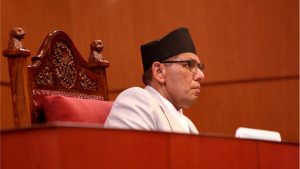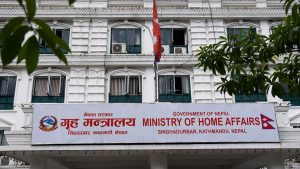
Nepal’s Educational Exodus – Gains and Losses

Nepal stands at a crossroads where its financial gains through remittance are intricately tied to a significant loss of human capital, exemplified by the burgeoning expenditure on foreign education. In the fiscal year 2023-24 alone, Nepal sent a staggering 95.85 billion rupees abroad for the education of its citizens, marking a sharp 42.5 percent increase from the previous year. This trend underscores a growing reliance on foreign education, fueled by a perception of better opportunities overseas.
The numbers speak volumes: over 90,000 Nepali students sought clearance to study abroad in just the first eight months of this fiscal year, continuing an upward trajectory seen over recent years. This mass exodus for education highlights not only the aspirations of Nepali youth but also deep-rooted concerns about the quality and accessibility of education at home.
Undoubtedly, the remittances sent back by these students-turned-workers abroad contribute substantially to Nepal’s economy. However, the flip side of this coin is the loss of skilled manpower and potential leaders who could otherwise drive Nepal’s development agenda forward. As the country grapples with a median age of 27.1, among the youngest in the region, the export of its youth poses long-term demographic and developmental challenges.
The allure of education in aging developed nations like Japan, the United States, and Canada, underscores a global demand for youthful talent that Nepal is inadvertently supplying. While this migration serves immediate economic purposes, it raises critical questions about Nepal’s own capacity building and future sustainability.
Moreover, the underlying causes behind this exodus are complex and multifaceted. A perception of a saturated job market, coupled with concerns over educational quality and political stability, compels Nepali youth to seek greener pastures abroad. The failure to assure young minds of viable educational and career opportunities within Nepal perpetuates this cycle of outward migration.
To address this crisis of confidence, Nepal must embark on a dual strategy. First, enhancing the quality of education at home is paramount. This entails substantial investments in infrastructure, curriculum reform, and faculty development to make Nepali institutions competitive on a global scale. Second, a concerted effort in image-building is essential to restore faith in Nepal’s education system, emphasizing its strengths and potential.
Ultimately, Nepal stands to gain from the remittances of its diaspora, yet it must simultaneously invest in retaining and nurturing its brightest minds. The challenge lies not only in economic strategies but also in fostering an environment where staying and contributing to national growth are viable and attractive choices for the youth.
As Nepal navigates its future, bridging the gap between financial gains from remittances and the loss of human capital remains a critical imperative. The time to act is now, lest Nepal continues to export its youth while grappling with the consequences of a hollowed-out educational and economic landscape.














Comments